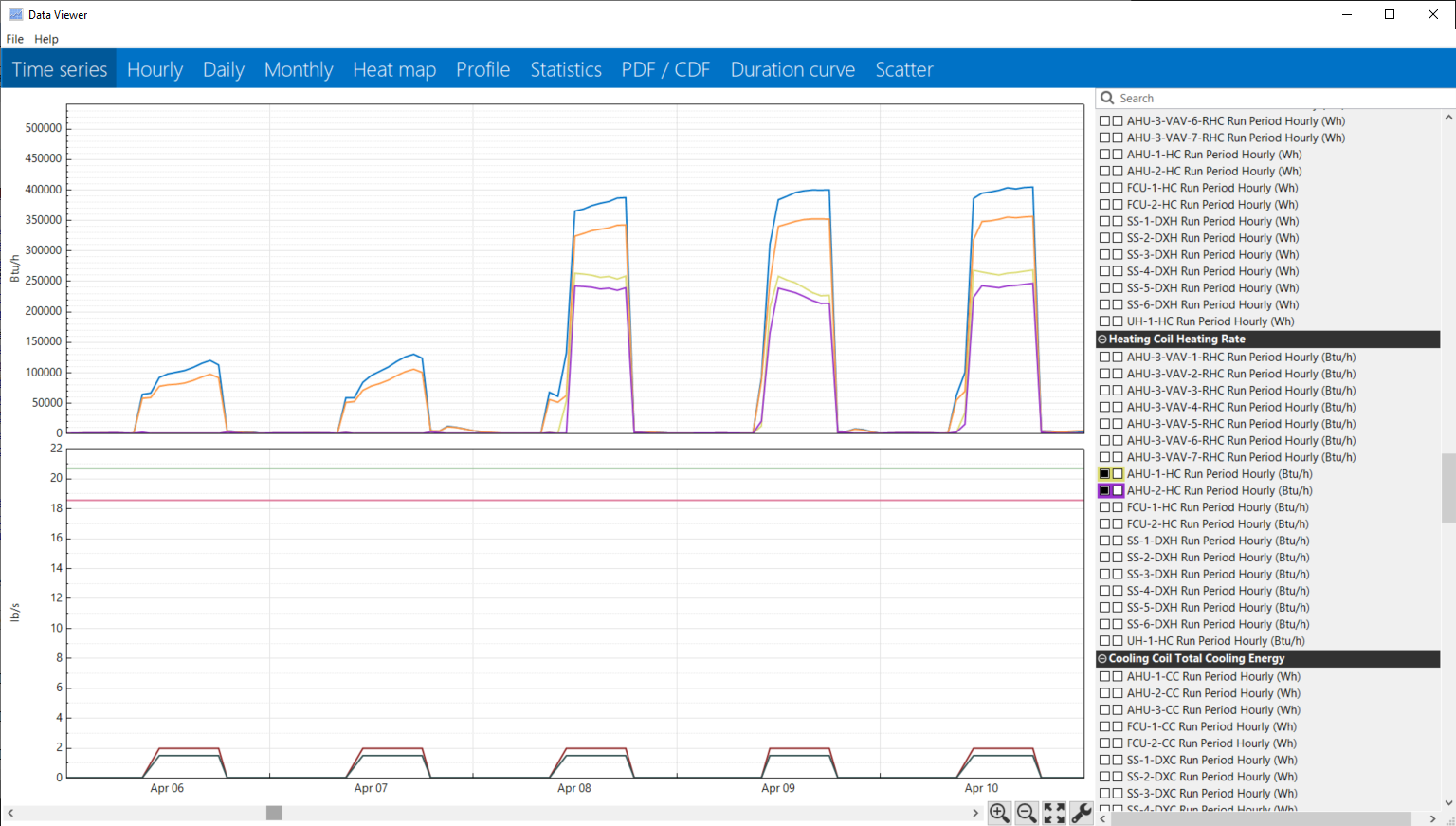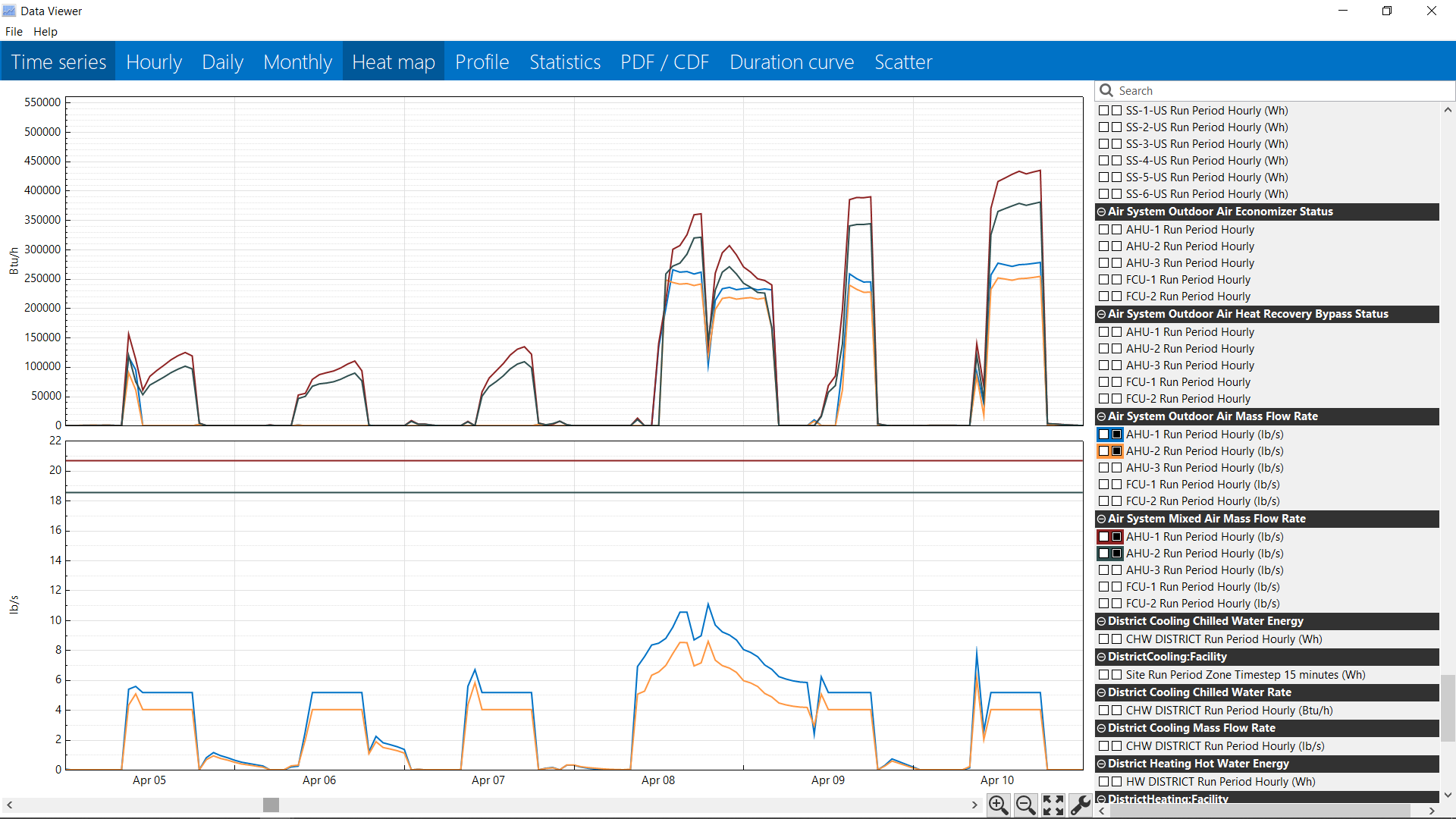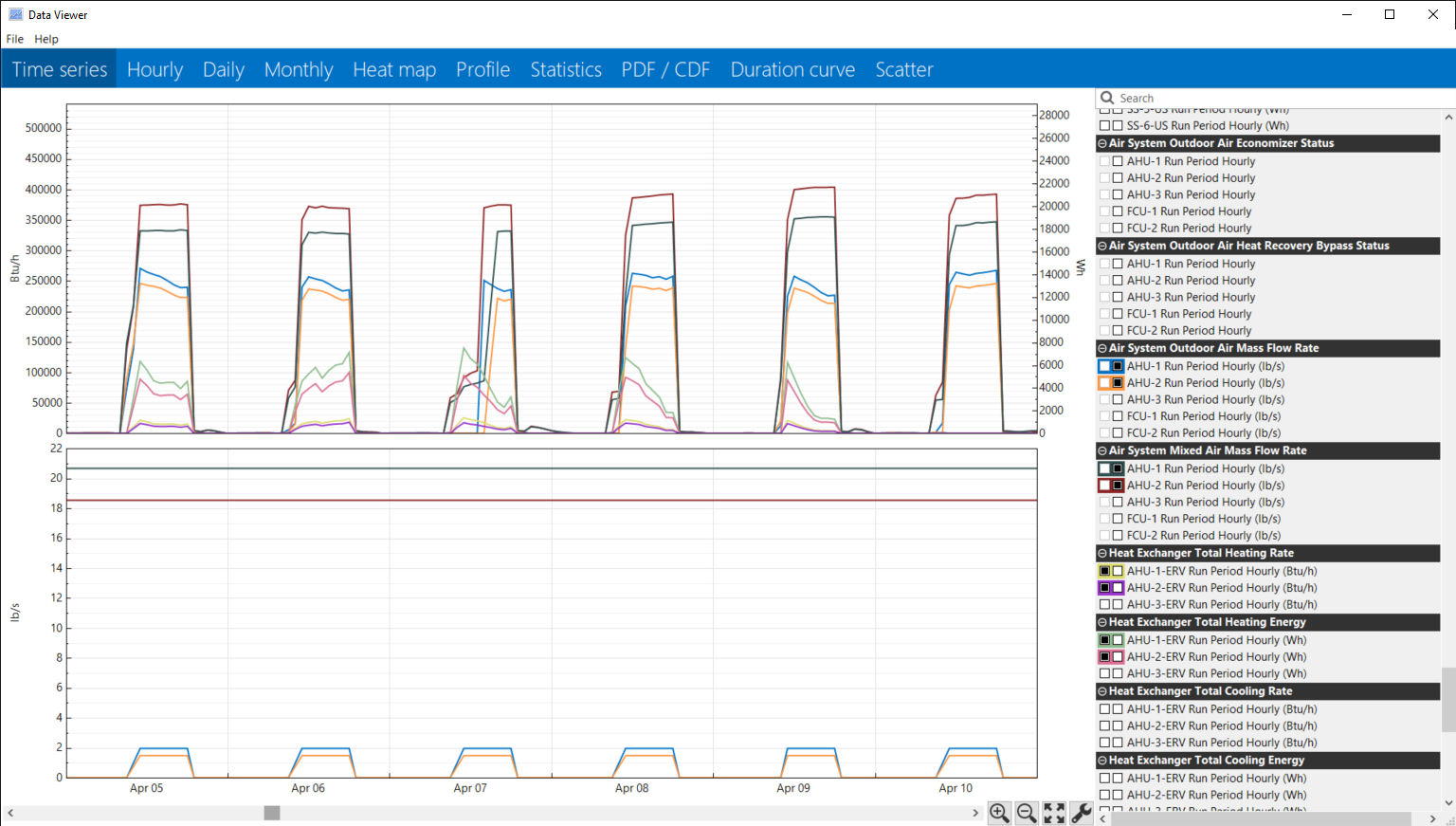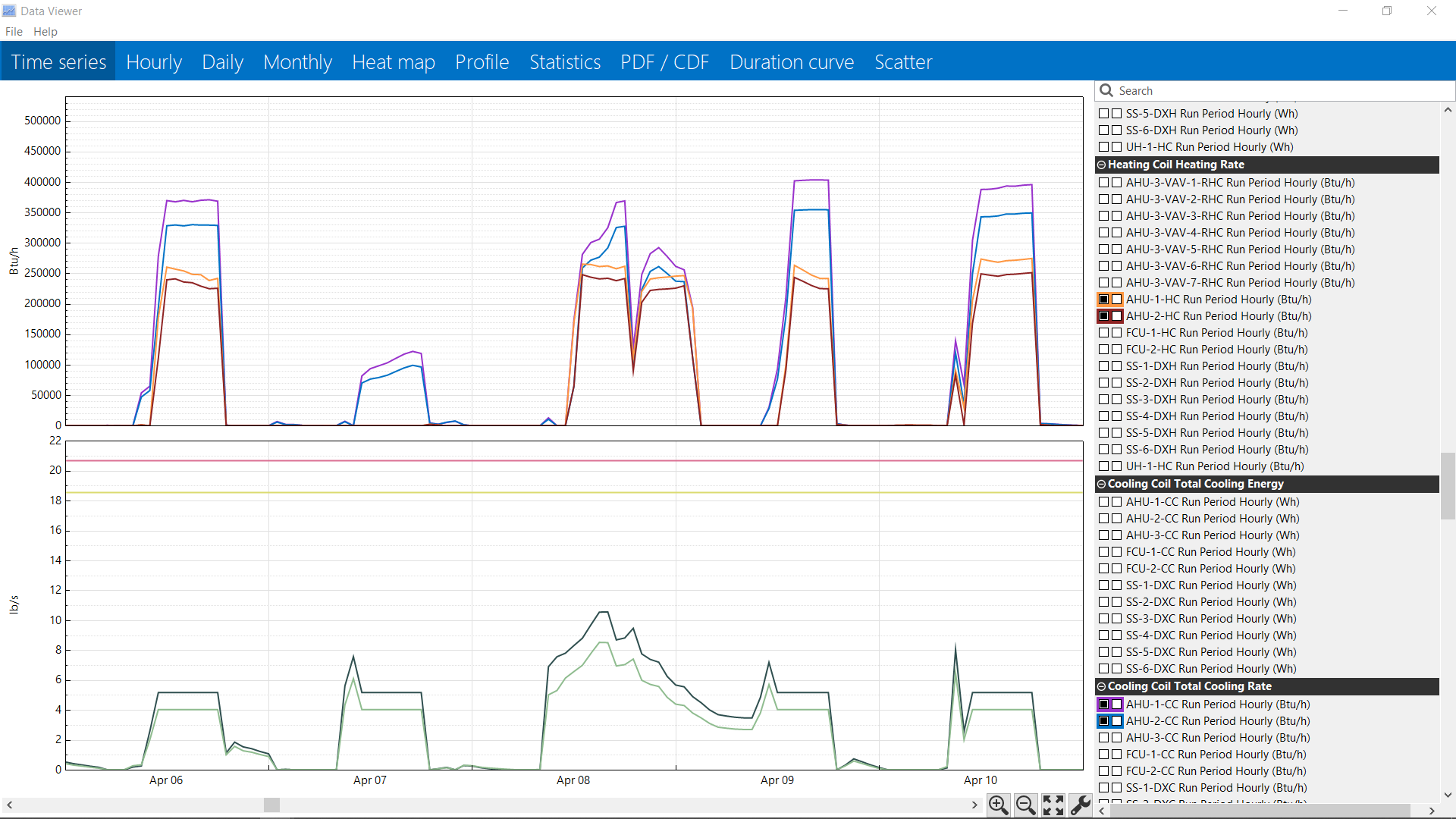I have a fairly simple model with two large singe zone CAV AHU and one large multi-zone VAV AHU. The CAV AHU have CHW cooling and HW heating coils, the VAV AHU has a CHW cooling coil, with HW reheating coils in its seven (7) VAV terminal units. CHW and HW are district energy, i.e. no local chiller or boiler. All three AHU also have some OA (10% ... 15%). During occupied hours, these have both a thermostat and a humidistat. Both temperatures and humidities come out as expected when running the model and reviewing data in DView, as do flow rates.
So then I thought I'd add ERV to each AHU and see what happens. All I do is insert a HeatExchanger:AirToAir:SensibleAndLatent, set its flow rate to the OA flow rate of the AHU (from Controller:OutdoorAir, which has minimum and maximum set to the same value), set "Supply Air Outlet Temperature Control" to "No" and then run the model.
When I do that, the EUI increases (!) from 131.60 kBTU/ft2/y to 137.65 kBTU/ft2/y, and the increase is due almost entirely to increases in district cooling and especially district heating. When I look at the heat exchanger cooling and heating rate in DView, there is some energy being exchanged in summer and winter (all positive numbers), something like 10% of the CHW cooling and HW heating coil energy.
So why does the EUI increase with ERV? I am not even adjusting for any pressure drop increase due to the presence of the ERV in the air stream, and the increase, like I said, seems to be almost entirely due to district energy anyway. By the way, the Heat Recovery Bypass Status and Economizer Status appear to be zero at all hours, too.








